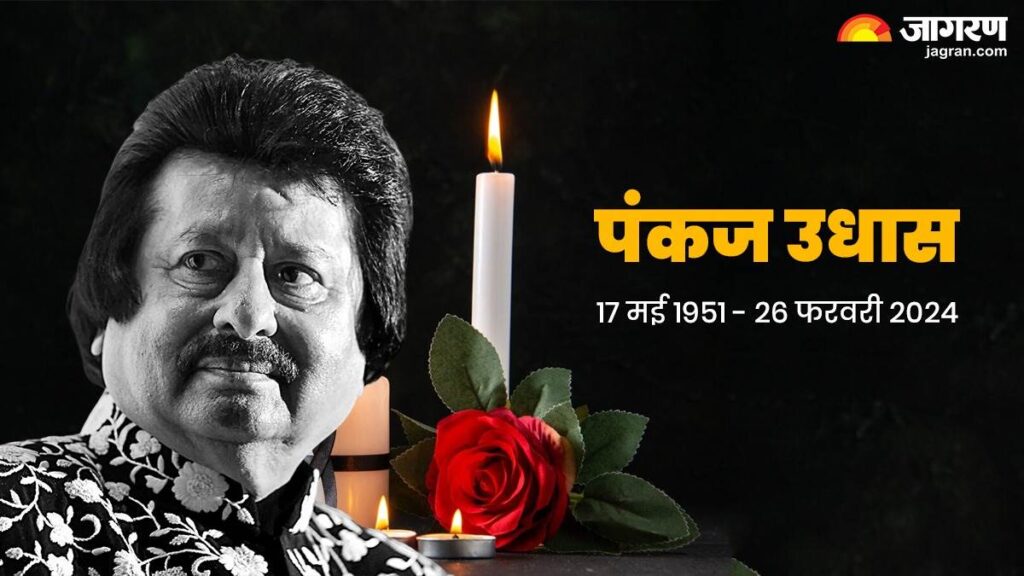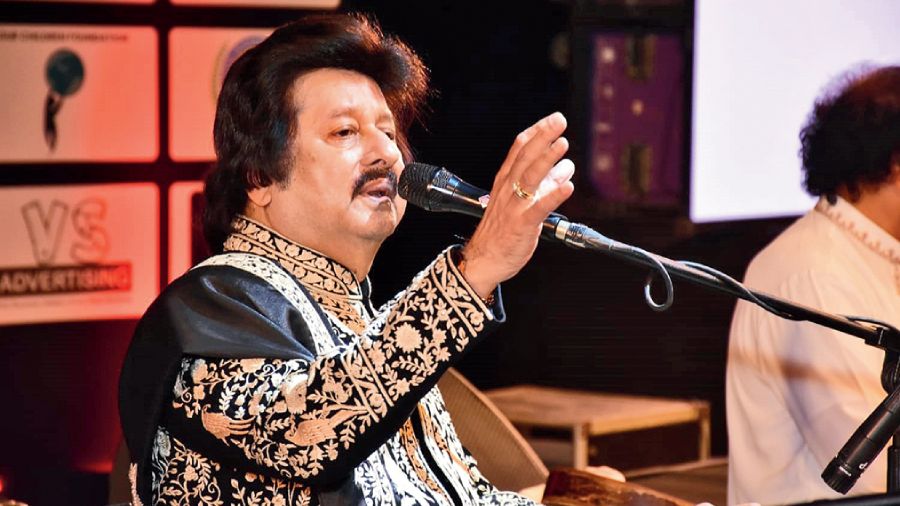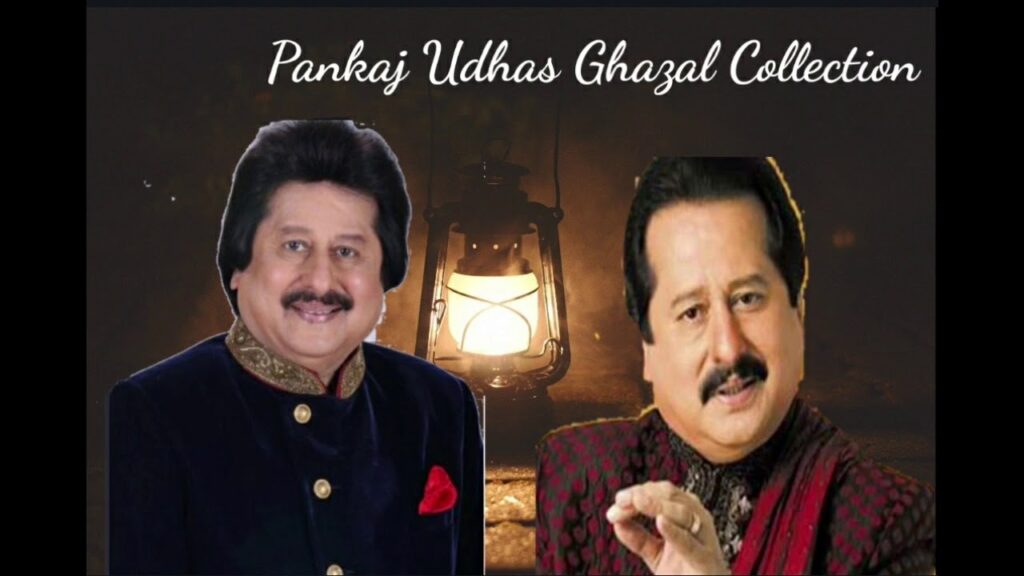Popular Ghazals Pankaj Udhas, the sweet voice that comforted wounded hearts, passed away in Mumbai on February 26 at the age of 72 following a protracted illness. Ghazals became popular among young people thanks to Udhas, who followed in the footsteps of Mehdi Hasan and Jagjit Singh at the beginning of 1980, when the “angry young man” had squeezed melody out of our lives. He defied convention by releasing the romantic form from Persianized Urdu, allowing them to express their suffering in a straightforward verse such as Deewaron Se Milkar Rona Achcha Lagta Hai. He also modified the melancholic orchestration to produce a fresh, modern melody that could proclaim Mohe Aai Na Jag Se Laaj Main Itna Zor Se Nachi Aaj Ki Ghungroo Toot Gaye.

For most people who grew up during the period when music videos were replacing Chitrahaar and the middle class was becoming more open to the idea of going to ghazal concerts, the image of an exquisitely dressed Udhas with a harmonium, not a hair out of place, whispering ever so softly into the mic is etched in their memory.
Master of Ghazals Pankaj Udhas on his symphony of timeless songs
However, Udhas’ performance of Chitthi Aayi Hai for Mahesh Bhatt’s Naam is the song that made him immortal. The Laxmikant-Pyarelal song, which was released in 1986, became the anthem of migrants and the diaspora. The song, which was based on Udhas, was intended for the Indian diaspora in the movie. However, because of the passion in Udhas’ voice, Anand Bakshi’s lines came to represent the longing of every immigrant for their homeland. Emails, Skype conversations, and Zoom calls replaced letters, but every time Udhas raised his voice to beg Panchhi Pinjra Tod Ke Aaja, Desh Paraya Chhod Ke Aaja, the song stuck in my throat.
After making an impression on youthful listeners with Purab Na Jaiyo Paschhim Na Jaiyyo (Jawaab, 1985), the song elevated him to a household name. Ek Hi Maqsad (1988), in which he composed the music and performed the hit song Chandi Jaisa Rang Hai Tera, came next. He and Anuradha Paudwal sang the well-known duet Aaj Phir Tumpe Pyar Aaya Hai for Feroz Khan’s Dayavan that same year. He also wrote the poignant song Jeeye To Jeeyen Kaise for Nadeem Shravan in Saajan (1991), which is still remembered to this day. His voice could appeal to a truck driver’s aesthetic sense as well as their connoisseurship. All of us have traveled great distances while listening to a bus driver’s creaky cassette player play Na Kajre Ki Dhaar (Mohra, 1994).
A feast of ghazals
Udhas, who was up in a family of landowners in Charkhadi, Rajkot, was first exposed to music by his government-employed father, a rabab player. At first, Ustad Ghulam Qadir Khan taught Udhas the tabla, but he quickly transitioned to the classical genre. After the family relocated to Mumbai, Udhas studied under Navrang Nagpurkar, a Bhendi Bazar Gharana practitioner who also instructed Asha Bhosle. Manhar and Nirmal, his older brothers, were already well-known performers. Manhar was the one who first brought playback singing to Udhas. Udhas experienced early failures before turning to non-film ghazals, where he quickly became popular with albums like Tarannum, Muqarrar, Aahat, and Mehfil.
Moreover, read
In honor of the master ghazal performer Pankaj Udhas
A lot of his well-known ghazals dealt with the subjects of flagon (paimana) and tavern (maikada). Ghazals such as Sharab Cheez, Ek Taraf Uska Ghar, and Ek Taraf Maikada Although Hi Aisi Hai became a staple of his performances, he was criticized for normalizing drinking. Udhas maintained that they were metaphors in Sufi poetry for the intoxication of the divine, although he didn’t always stand by this claim when he and Kishore Kumar sang the song Ek Ek Ho Jaye Phir Ghar Chale Jaana at Ganga Jamunaa Saraswati (1988). Additionally, record labels catered to this perception by titling his albums Madhosh, Paimana, and Nasha.

The Padma Shri was in high demand for international engagements due to his strong emotional ties to the diaspora; he gave performances at Madison Square in New York and the Royal Albert Hall in London. He had a devoted fan base for his concerts even after Hindi cinema moved away from ghazals.
On Tuesday, there will be a funeral service for well-known ghazal singer Pankaj Udhas, who passed away after a protracted illness. Using Instagram
About Pankaj Udhas’s final rituals, Nayaab
“In loving memory of Padmashri Pankaj Udhas,” it said. We regret to notify you that he passed away on February 26, 2024, as a result of a protracted illness. From 3 to 5 p.m. on Tuesday, February 27, there will be a funeral. Location: The Hindu Cemetery. Landmark Opp. Four Seasons Worli (Mumbai): Dr. E. Muses Rd. The Family Udhas.”
Pankaj Udhas passed away on Monday
At the age of 72, Pankaj Udhas passed away in Mumbai on Monday. He passed away at the Breach Candy hospital at around eleven in the morning, according to news agency PTI, which cited a family source. “With a very heavy heart, we are saddened to inform you of the sad demise of Padmashri Pankaj Udhas on 26th February 2024 due to a prolonged illness,” Nayab posted to Instagram.
Anup Jalota discussed his acquaintance
Performer Anup Jalota recounted his intimate relationship with the ghazal maestro who passed away. He remarked, “I have lost my friend,” in an interview with the news agency ANI. People have lost a wonderful Ghazal vocalist in Pankaj Udhas. My pal is no longer with me. Talat (Aziz), Pankaj (Udhas), and me were a well-known trio. Together, we performed in numerous concerts. I am deeply saddened by Pankaj Udhas’s passing. He introduced Ghazal to every home and won people over to his way of thinking. It was a priceless contribution that we will never forget.
“I had met him 4 to 5 months ago,” he continued. He was quite frail. He was now a lighter man. I was excited to finally meet him. I had to wait two or three months to see him. The news is really depressing. Additionally, we founded the Khazana Ghazal festival to provide a stage for upcoming performers. Our aim was to present the up-and-coming ghazal vocalists. Pankaj Udhas shared our desire for ghazals to remain popular in people’s hearts.”

About the life and work of Pankaj Udhas
On May 17, 1951, Pankaj Udhas was born in Jetpur, Gujarat. He was well-known not only for composing ghazals but also for his film work. He became well-known in 1980 thanks to the release of his solo ghazal album Aahat. And went on to achieve further victories in the future, such as Mukarar (1981), Tarrannum (1982), Mehfil (1983), and numerous others.
Chitthi Aayi Hai, Chandani Raat Mein, Na Kajre Ki Dhaar, Aur Ahista Kijiye Baatein, Ek Taraf Uska Ghar, and Thodi Thodi Piya Karo are a few of his well-known interpretations. He became well-known for his playback vocals in a number of Hindi movies, such as Mohra, Saajan, and Naam.
“Pankaj ji was my choice for Kitaabein. When I asked, “Sir, aap gaaoge?” he obligingly said that he would first like to hear the piece. He exclaimed, “The lyrics are by Zafar Gorakhpuri, how come you turned a ghazal into a commercial song?” after I played it for him. He was enthralled. I was surprised by the praise. I shall go places, he replied, giving me an embrace. It was really nice of him to complement me; at the time, his ghazals made him a household name. Even in death, he was a star,” the 63-year-old recalls.

Bimal Mardi is a Professional Content Writer. He works in First Santal Broadcast Network TV/ News channel in India. Bimal Mardi writes about Technology, Education and Tech Product Reviews
